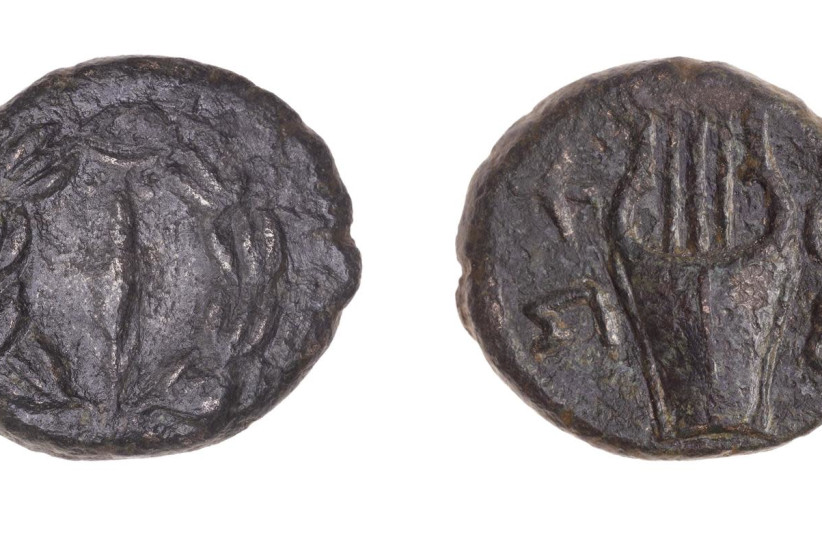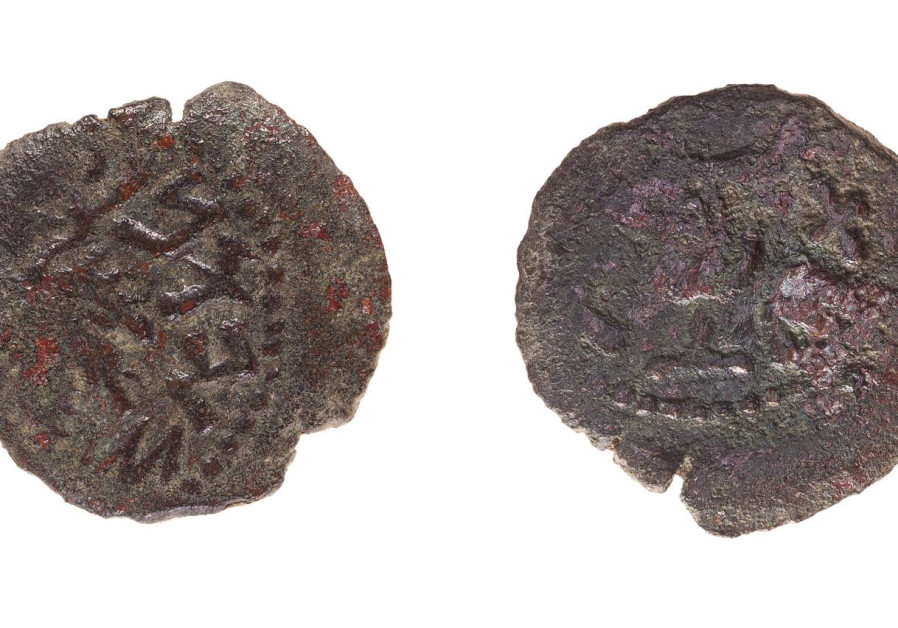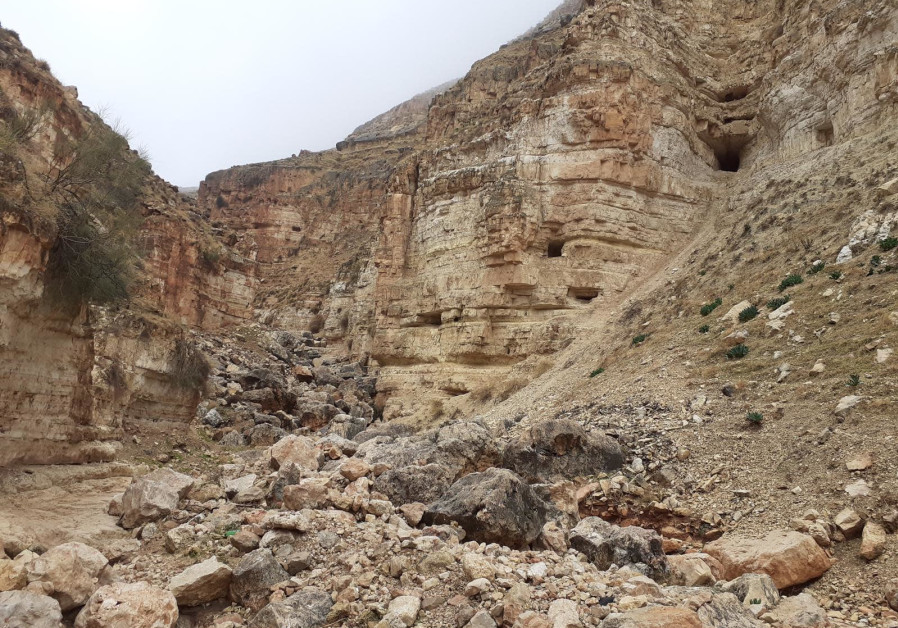
Arab revisionists have spent real effort attempting to deny the reality of jewish existence in the holy land at all. Coins are almost the only best way to stop such silliness.
So yes every such discovery is welcome here.
The present Jewish reality has been economically benficial to the whole of the Levant and that has been in spite of the hyper tribalism exercised amoung the Arabs themselves. Yet that is also fading as well.
2,000-year-old ‘Freedom to Zion’ coins found in biblical heartland
The coins, dated to around the Second Temple and Bar Kochba revolt periods, document the Jewish revolt against the Romans.
JULY 13, 2021 14:46
https://www.jpost.com/archaeology/2000-year-old-freedom-to-zion-coins-found-in-binyamin-region-673677
The 2,000-year-old coins that date back to the period of the Jewish revolts against the Romans, July 13, 2021.
Two coins dating back some 2,000 years were found in the Binyamin region of the West Bank during an archaeological survey conducted by Bar-Ilan University, the university and the Binyamin Regional Council announced Tuesday.
The coins date back to the period of the Jewish revolts against the Romans.

The 2,000-year-old coins that date back to the period of the Jewish revolts against the Romans, July 13, 2021. (Credit: TAL ROGOVSKY)
The area is located in the northern part of the Judean Desert.
“We conducted the survey about a year ago with a group of my students,” said Dr. Dvir Raviv from Bar-Ilan, who led the initiative. “We had heard about antiquities looters active in the area, and especially in a cave near Wadi Rashash. I visited the cave and I saw pottery sherds and potential for interesting findings.”
An archaeological survey does not involve extensive excavations but rather having researchers sample what is on the surface of an area or just very limited digging.
The Bar-Ilan survey was not limited to the cave, but also extended to the surrounding area.
One coin was discovered near Wadi Rashash, and another in a location known as Hirbet J’bait.
The artifact found in Hirbet J’bait was minted around 67 CE. It features a vine leaf and the Hebrew inscription Herut Zion (Freedom for Zion) on one side, and a goblet and the inscription “Year Two” on the other. Just three years later, in 70 CE, the Romans would destroy the Temple in Jerusalem. Several other remains from that period, including a ritual bath, have been uncovered in the area.

Excavation site where two 2,000-year-old coins were found, dating to the time of the Jewish revolt against the Romans, July 11, 2021. (Credit:
The second coin dates back to the time of the Bar Kochba Revolt some 70 years later. It bears a palm branch surrounded by a wreath and the inscription LeHerut Yerushalayim (Freedom to Jerusalem) on one side and a musical instrument and the name “Shimon” on the other – the first name of the rebellion’s leader Bar Kochba.
The revolt – also known as the Third Jewish Revolt – broke out over the religious restrictions imposed by the Romans, as well as their decision to build a Roman city over the ruins of Jewish Jerusalem, including a pagan sanctuary where the Temple had stood.
At the time, coins were considered an important expression of sovereignty, as Donald T. Ariel, head of the Coin Department at the Israel Antiquities Authority told The Jerusalem Post in a recent interview. “Minting coins meant to be free.”
SEVERAL HUNDRED Bar Kochba coins have been found in excavations around the Land of Israel – mostly in the area that was known as Judea back then – where the insurgents managed to score some important victories over the Romans and establish a brief, independent entity.
Some were discovered in the caves in several areas in the Judean desert.
However, the finding in Wadi Rashash marks the first time that such an artifact has been uncovered in this specific location.
Back then, the area constituted the 11th district of the province of Judea. Its capital city was Aqrabat; a modern Arab village with the same name still stands on the same spot.
“The coin from Wadi Rashash indicates the presence of a Jewish population in the area until the end of the Bar Kochba revolt, in contrast to what was previously believed by researchers: that the Jewish settlements north of Jerusalem were all destroyed during the Great Revolt and the area not resettled afterward,” Raviv said.
“This coin is in fact the first proof that the Akrabat region, the northernmost of the Judean districts during the Roman period, was controlled by Bar Kochba’s administration,” he noted.
The closest finding of Bar Kochba coins had occurred at an American-led excavation in the 1960s in a cave some six kilometers from Wadi Rashash.
Besides the coins, archaeologists have uncovered pottery sherds and other elements suggesting the continuity of the Jewish settlement at the time.
The caves in Wadi Rashash were much smaller than the ones in other areas of the Judean Desert, where Jewish refugees were known to have hidden.
“However, based on the amount of pottery, we can assume that dozens of people found shelter there,” Raviv said.
The caves had the advantage of being very close to the spring and also to an ancient settlement that existed where the Arab village of Duma stands today.
“Therefore we can assume that these refugees found shelter very close to their houses,” Raviv said.
During the survey, the archaeologists found signs of looting, he said, which is common in the area.
No comments:
Post a Comment